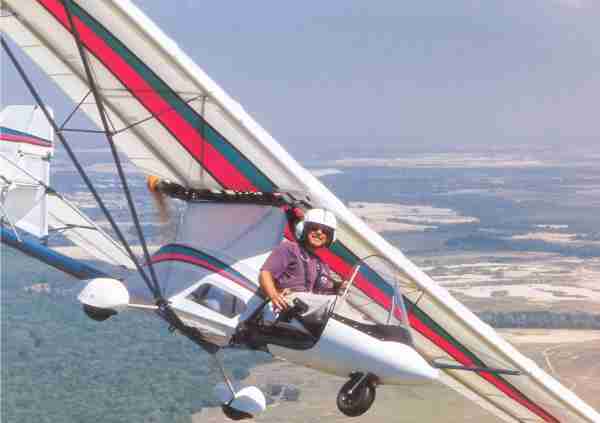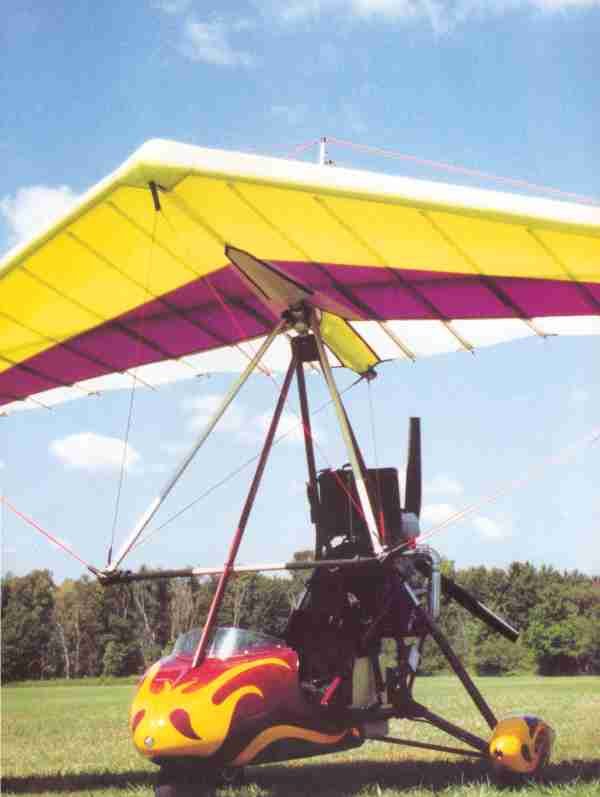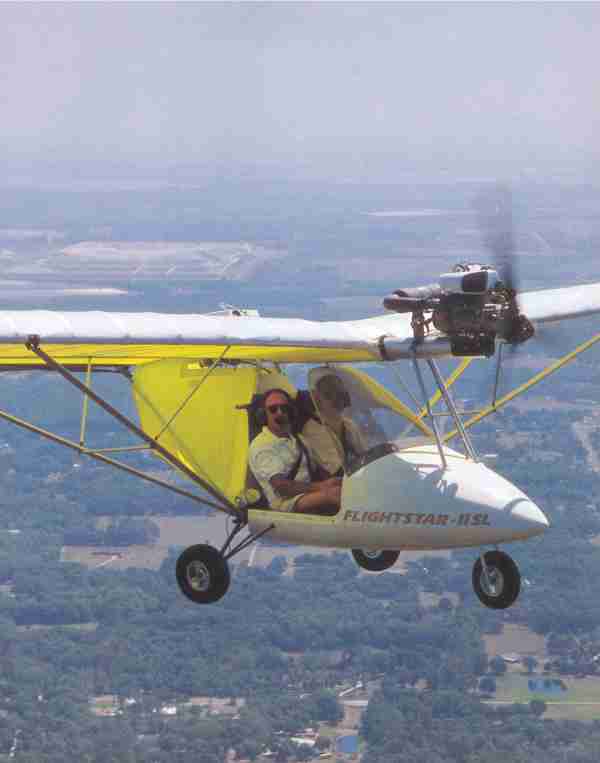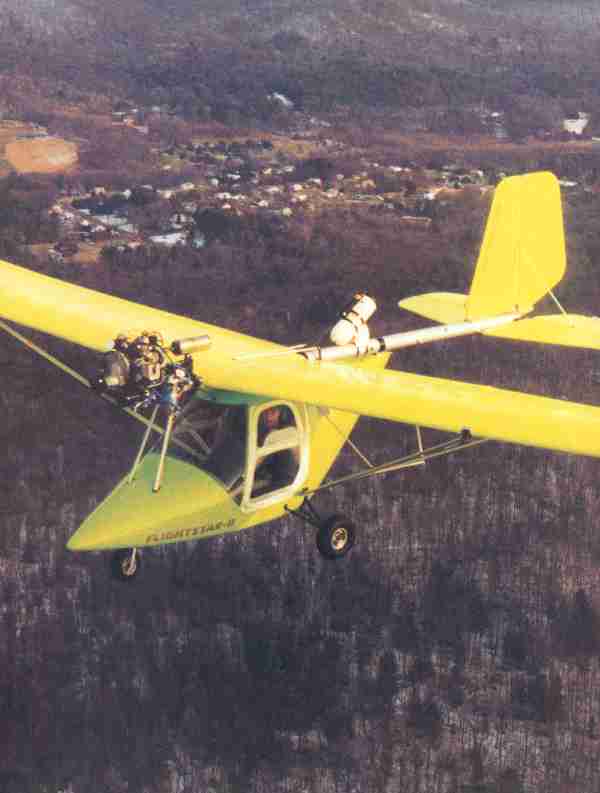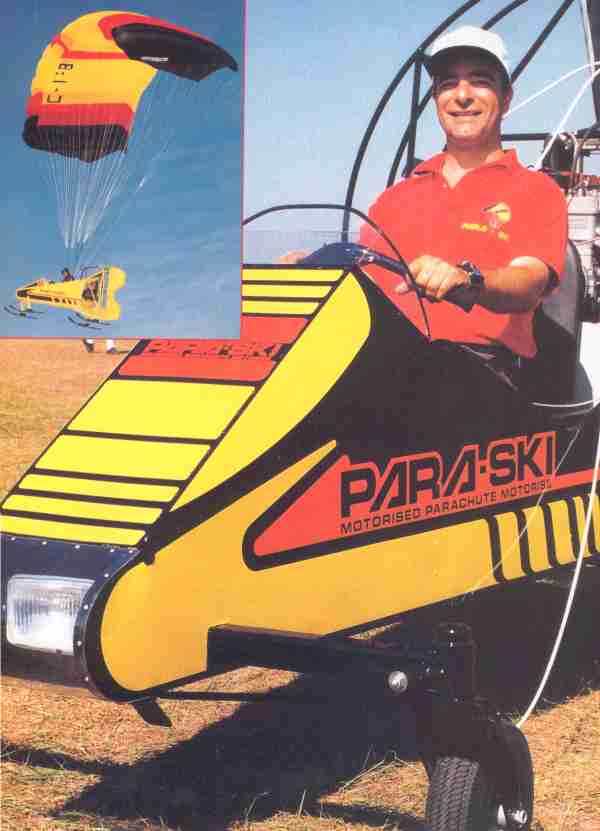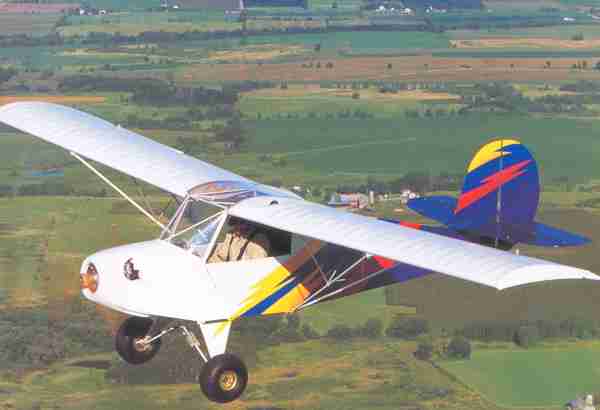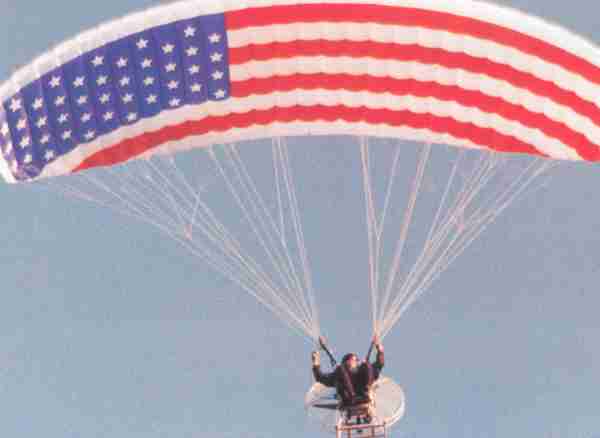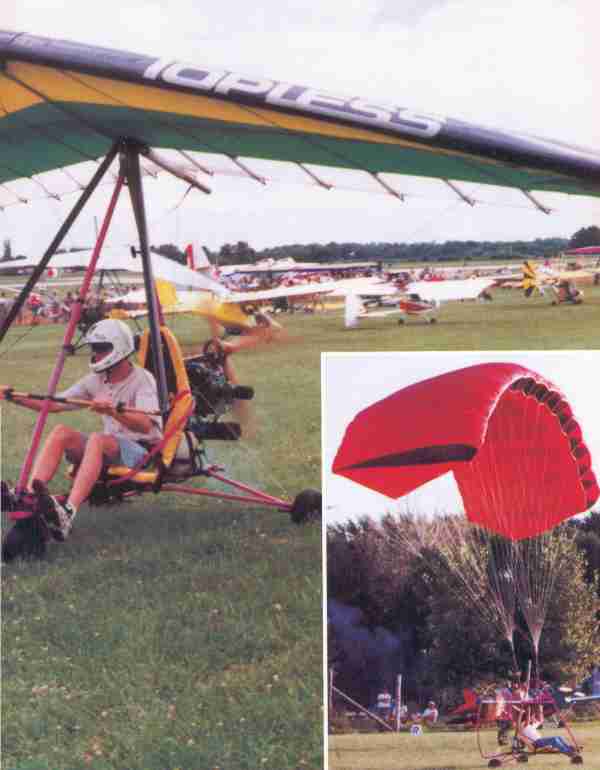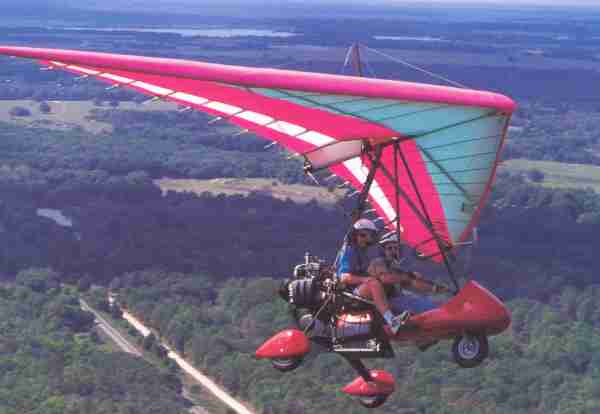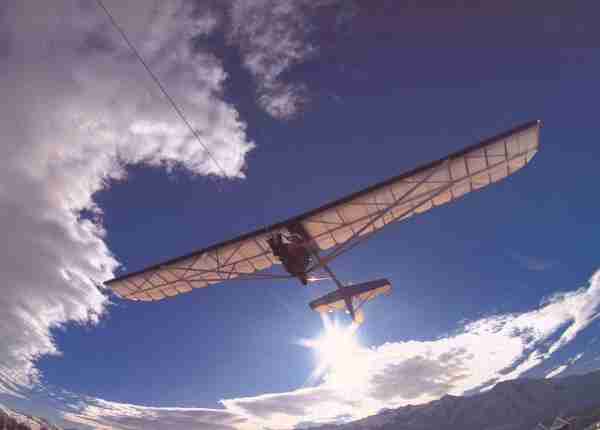
Winner of the Outstanding New Design award in its public debut at Sun ‘n Fun ’95, the SuperFloater was a well-received by many who flew with the ultralight glider. The light weight unpowered machine is a 20-years-later redesign of an aircraft created by Larry Hall and Klaus Hill in the mid-’70s. The SuperFloater was completely redone at the request of U.S. Aviation, who sensed the new market for the easy-flying glider – aging hang glider pilots, as well as ultralight pilots looking for a change of pace from power in flight. The ’95 SuperFloater has a beefed-up airframe for more frequent duty and tow launching. The high-dihedral wings were flat and flattened and the span extended for additional performance. Full-span ailerons replaced rudder and elevator-only controls. The ultralight sale plane is now supplied as a ready-to-fly, test-flown aircraft. The SuperFloater can be towed aloft by almost any ultralight with an excess of power.



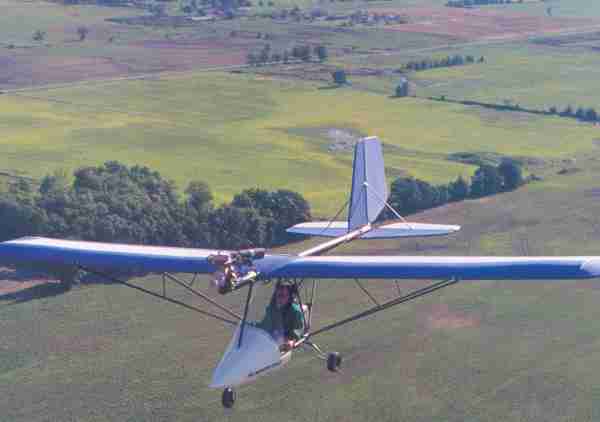

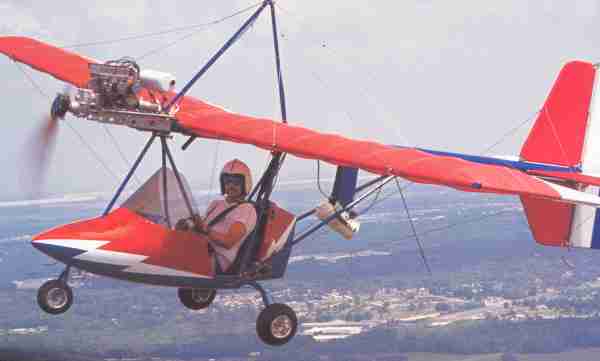

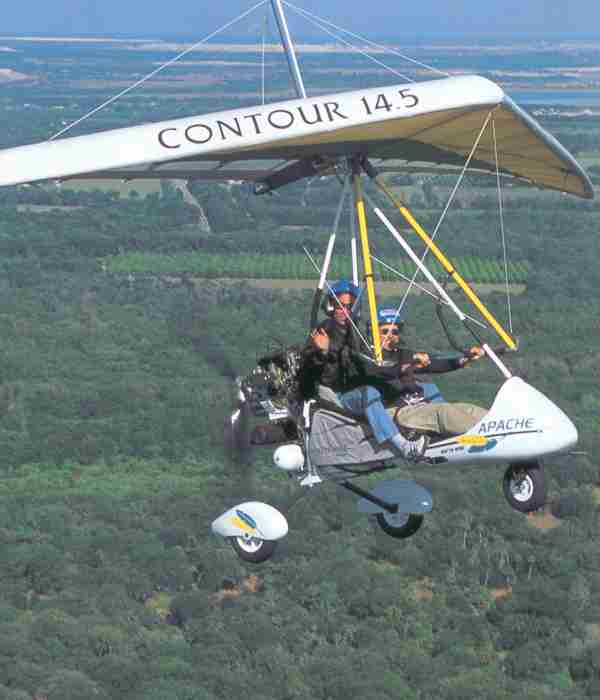

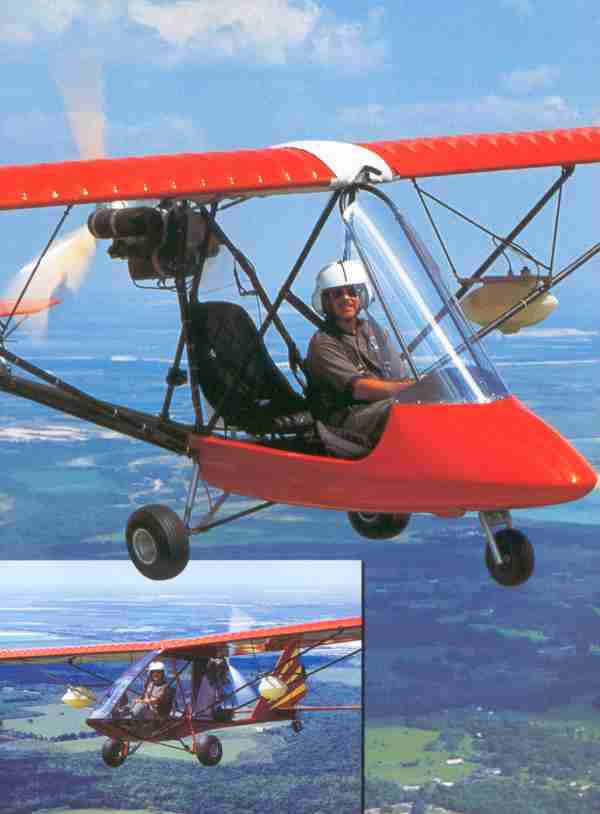

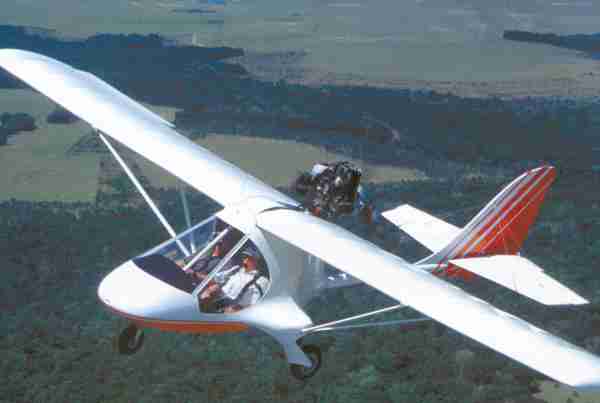

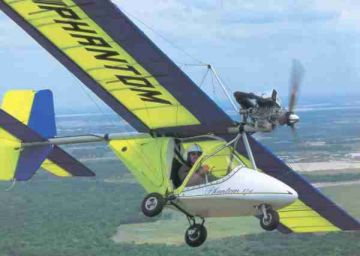

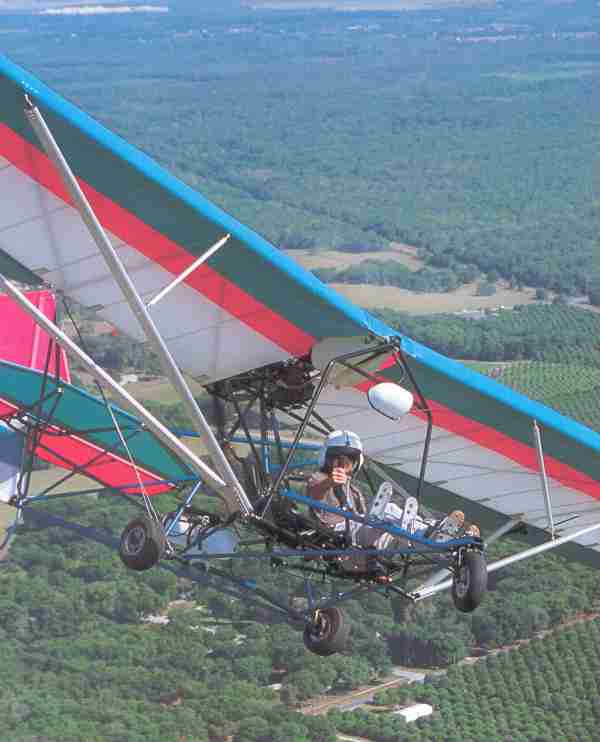

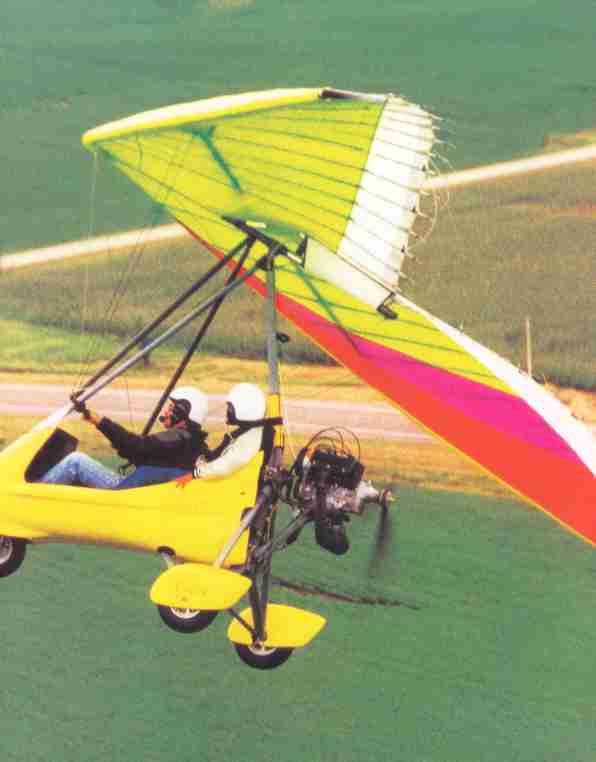

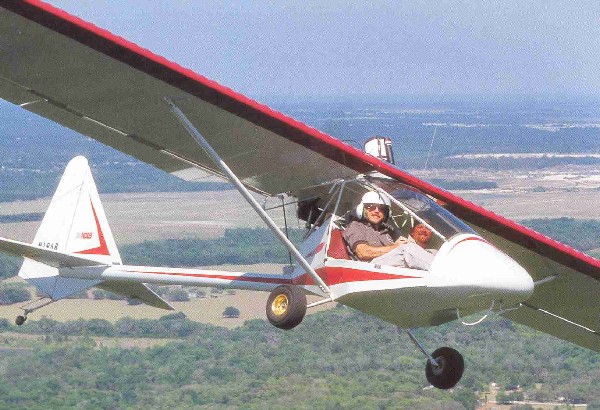

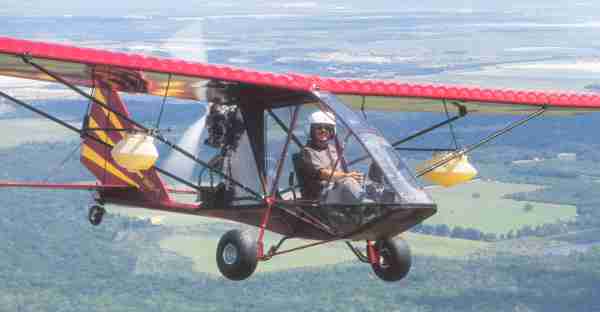 The wide open cabin is surrounded by well supported clear Lexan giving you a panoramic view from either seat. Tandem aircraft often cramp the aft seat and don't give it the best visibility, but Chinook sets a new standard. Your passenger or student will also enjoy plenty of room; a set of dual controls means the Chinook can easily be used for training flight.
After the ASAP company took over production they made numerous refinements that earn the name Chinook Plus 2, and those who have seen the older, simpler Chinooks need to reexamine the current model.
Flight characteristics of the old Chinook were largely preserved as the machine made the transition from simple single seater to the feature laden two seaters of today. A versatile design, Chinook endures for many good reasons.
The wide open cabin is surrounded by well supported clear Lexan giving you a panoramic view from either seat. Tandem aircraft often cramp the aft seat and don't give it the best visibility, but Chinook sets a new standard. Your passenger or student will also enjoy plenty of room; a set of dual controls means the Chinook can easily be used for training flight.
After the ASAP company took over production they made numerous refinements that earn the name Chinook Plus 2, and those who have seen the older, simpler Chinooks need to reexamine the current model.
Flight characteristics of the old Chinook were largely preserved as the machine made the transition from simple single seater to the feature laden two seaters of today. A versatile design, Chinook endures for many good reasons.
